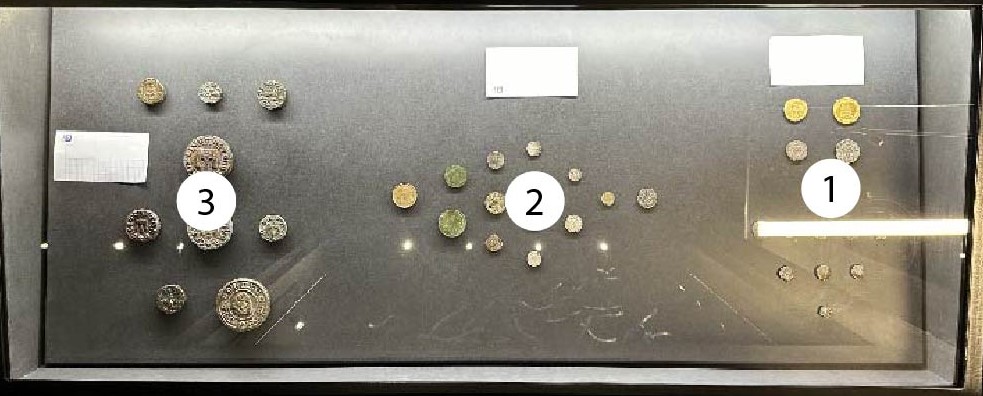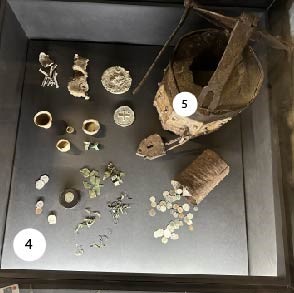COINS


Coins
- 13th-16th centuries and drachma from the 1st century B.C.
- Silver / Gold / Copper
- France
The drachma shown above stands out from the other coins since it dates from the 1st century B.C. It was minted by a Celtic people, the Tectosages, living in the Toulouse region.
All the other coins feature a fleur-de-lis, the emblem of the French royalty, since they were minted by royal order. They also include a range of symbols: the castle in Tours, a crown, a cross and Latin inscriptions with the name of the king.

Coins
- 11th-19th centuries (from left to right)
- Copper, silver, bronze and alloy
- Penne Castle
These coins were found during archaeological excavations in the castle. They were used to confirm several dates, as for example the radiating chapel in the church, which was dated to the 12th century thanks to an obol issued by the bishop of Cahors (2nd coin from the left).

Town weights
- Bronze
- Mirepoix, Gaillac, Toulouse and Carcassonne
- Respective dates: 2nd or 3rd quarter of the 14th century, 1291, 1239 and 13th century
In the Middle Ages, weights and measures were not identical everywhere but were specific to each town. Each town had its own weight, with its name sometimes directly engraved on it, to measure an object or food item for sale.
The weight included the name of the town where it was issued. For example, the weight of the city of Toulouse shows Narbonnais Castle with its three towers. The weight of the town of Mirepoix includes the name of the town (« Mirapic »), and its coat of arms (« golden fish gules in a fess »).


Counterfeiting workshop
- 17th century
- Cistern of Penne Castle
In 2017, excavations in the castle unearthed a counterfeiting workshop that was active in the 17th century. It was hidden in the cistern, which was no longer in use.
Several different objects were found: lead sheets, stained glass, a crucible where alloys were melted and counterfeit coins.
A bar, probably made of lead and decorated with a Templar cross, is included in the display (donated by Pierre Malrieu).

Church collection box
- 15th century
- Wrought iron and oak
- Height: 30 cm
- France
This collection box was placed in a church to collect money offerings from churchgoers. The donations could either be for the poor (alms) or to maintain the church building (offerings). In French the collection box is called a « tronc » (« trunk ») because it was directly hewn and sculpted from the trunk of an oak tree. The trunk was split and one of the branches was later lost.

